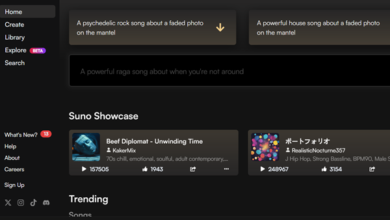Generative AI steps up as a ‘facilitator’

Two generative artificial intelligence tools are giving state and local leaders a glimpse of what could be possible when they get a grip on the technology.
The Texas Department of Public Safety has rolled out a generative AI-powered chatbot to give its procurement officials quick access to regulations, information and guidance on the state’s contracting procedures. The conversational bot, which relies entirely on internal data and provides citations for its answers, aims to get staff the information they need faster.
Meanwhile, community engagement and civic analytics company Polco is testing its new tool Polly. The generative AI chatbot uses data from the company’s National Community Survey combined with other government research from the decennial census and the American Community Survey as well as local efforts.
Polly was developed by Government Performance Action & Learning, an initiative between Polco’s National Research Center, the University of Wisconsin-Madison’ High Road Strategy Center, the Hoover Institution at Stanford University, Arizona State University, the International City/County Management Association, Government Finance Officers Association and the Harvard Kennedy School of Government.
Using Polly, city leaders can get answers to questions about housing affordability, performance management and historical trends. The technology also provides assistance with administrative tasks like grant writing, strategic planning and budgeting.
Closed AI systems that rely on specific datasets can be a “facilitator” in government, Ben Lloyd, a product manager at Appian, said during the company’s Appian World conference last week in National Harbor, Maryland.
And recent research shows government leaders are looking forward to the opportunities generative AI can provide.
In a joint study released this month by the National Association of State Chief Information Officers and McKinsey & Company, respondents said they expected to see “productivity boosts, automated content generation, improved analysis and decision-making, and transformations of citizen interactions and service delivery,” among other benefits. There was also “little observable anxiety about job replacement” among the 49 CIOs that responded to the survey.
For Texas, putting together the chatbot meant uploading thousands of pages of state procurement documents, including laws, rules and other regulations. Inspired by the search engine previously known as Ask Jeeves, where a butler answered people’s questions, the chatbot is known as Michael-Bot, named after Michael Parks, the Department of Public Safety’s director of procurement and contract services who helped spearhead the project.
All those documents are stored in a virtual document library and can be amended if necessary to correct minor things like typos or to incorporate rule changes and new laws. Parks said, for example, the latest wrinkle in procurement policy that had to be accommodated was a ban on state agencies doing business with the likes of China and Russia.
It used to be that getting a contract approved was an “archaic” process, he said, involving interoffice mail and documents needing physical signatures. And if contracting officers wanted clarity on procurement rules while writing a solicitation, getting answers could take a long time. The sum of those incremental delays meant that acquiring more complex systems could take as long as two years, while simpler acquisitions could still take up to six months.
The combination of digitization of documents, automation of processes and centralized cloud services have led to significant time savings. The new chatbot has helped make finding information quicker too. Texas has more ideas to speed up procurement, including using automated clause generation for solicitation documents and using AI to run analysis on past solicitations to see how the process could be improved.
“We’ve been able to put information into a singular place, you don’t have to get it off a shared drive, you don’t have to provide access, you don’t have to worry about document management as far as version control,” Parks said in an interview at Appian World.
DPS started rolling out Michael-Bot as a pilot program, with employees encouraged to give feedback and build trust in the chatbot. That pilot program was effective in getting worker buy-in for the initiative, especially as staff learned that the chatbot would give consistent answers and demonstrated how AI could make their jobs easier.
“The first hurdle that you really have to overcome is the fear that somebody’s job is going to be replaced, or they’re not going to have any input,” Parks said. It’s important to make employees part of the development of their department’s AI, “instead of it coming down as an edict.”
Like Michael-Bot, Polly is built on a closed AI that allows city leaders to understand more about their own communities, or even explore how they stack up with others based on publicly available and collated data.
Tobin McKearin, Polco’s vice president of data science, showed examples of Polly providing data in response to questions on parks and recreation facilities in a specific city, countywide employment opportunities and trends on housing affordability. Output can also include historical trends.
Additionally, Polly can help with grant applications, or embedding its findings into government strategic planning documents, although its help extends only as far as providing insights, not doing the actual writing. Polco CEO Nick Mastronardi said Polly can provide clarity on how a community is doing and provide hard facts for legislators as they decide where to invest.
Take Polly’s data analysis “to your elected officials, and now, you’re not going to get hung up in stalemate and ambiguity. You’ve got a nice tactical, polished language, rolled up package,” Mastronardi said in an interview at the ICMA Local Government Reimagined Conference earlier this month in Boston. “Not just elected officials, you can bring it to your local philanthropic foundation for grant applications, bring it to your state, which is making more grants than ever before. Bring it to your residents in your strategic plan.”
Both Parks and Mastronardi agreed that AI tools should not be used to make decisions that require human insight and judgment, but instead in helping people do some level of research and supporting them in their jobs.
“Government is so regimented, and there’s the fear that AI can be influenced,” Parks said. “[We’re] going to use AI in procurement, but we’re only going to use it for investigation or leading us to or showing us, but no decisions will be made based on AI-generated activity.”



